
eBook - ePub
Sheep Ailments
Recognition and Treatment
Eddie Straiton
This is a test
Compartir libro
- 192 páginas
- English
- ePUB (apto para móviles)
- Disponible en iOS y Android
eBook - ePub
Sheep Ailments
Recognition and Treatment
Eddie Straiton
Detalles del libro
Vista previa del libro
Índice
Citas
Información del libro
Eddie Straiton is the world's outstanding communicator of veterinary procedures and animal care. He earned the title 'TV Vet' from the long series of television programmes in which he brilliantly demonstrated animal husbandry to a wide audience. Following on from his television experience, Eddie became a prolific author, and more than half a million copies of his books have been sold around the world. Now in its seventh edition, Sheep Ailments, Recognition and Treatment covers all the essential information that a flock owner, shepherd or student needs to know, featuring a concise, clear text based around a large number of specially-commissioned photographs.
Preguntas frecuentes
¿Cómo cancelo mi suscripción?
¿Cómo descargo los libros?
Por el momento, todos nuestros libros ePub adaptables a dispositivos móviles se pueden descargar a través de la aplicación. La mayor parte de nuestros PDF también se puede descargar y ya estamos trabajando para que el resto también sea descargable. Obtén más información aquí.
¿En qué se diferencian los planes de precios?
Ambos planes te permiten acceder por completo a la biblioteca y a todas las funciones de Perlego. Las únicas diferencias son el precio y el período de suscripción: con el plan anual ahorrarás en torno a un 30 % en comparación con 12 meses de un plan mensual.
¿Qué es Perlego?
Somos un servicio de suscripción de libros de texto en línea que te permite acceder a toda una biblioteca en línea por menos de lo que cuesta un libro al mes. Con más de un millón de libros sobre más de 1000 categorías, ¡tenemos todo lo que necesitas! Obtén más información aquí.
¿Perlego ofrece la función de texto a voz?
Busca el símbolo de lectura en voz alta en tu próximo libro para ver si puedes escucharlo. La herramienta de lectura en voz alta lee el texto en voz alta por ti, resaltando el texto a medida que se lee. Puedes pausarla, acelerarla y ralentizarla. Obtén más información aquí.
¿Es Sheep Ailments un PDF/ePUB en línea?
Sí, puedes acceder a Sheep Ailments de Eddie Straiton en formato PDF o ePUB, así como a otros libros populares de Technik & Maschinenbau y Tierhaltung. Tenemos más de un millón de libros disponibles en nuestro catálogo para que explores.
Información
Categoría
Technik & MaschinenbauCategoría
TierhaltungObstetrics
36 How Long Should Ewes be Kept?
Some time ago I asked a farming friend of mine – one of the most successful sheep farmers I know – how long he kept his ewes. He replied, ‘Until they have been dead at least three days.’ This laconic retort, to my mind, sums up the commonsense approach to successful sheep farming.
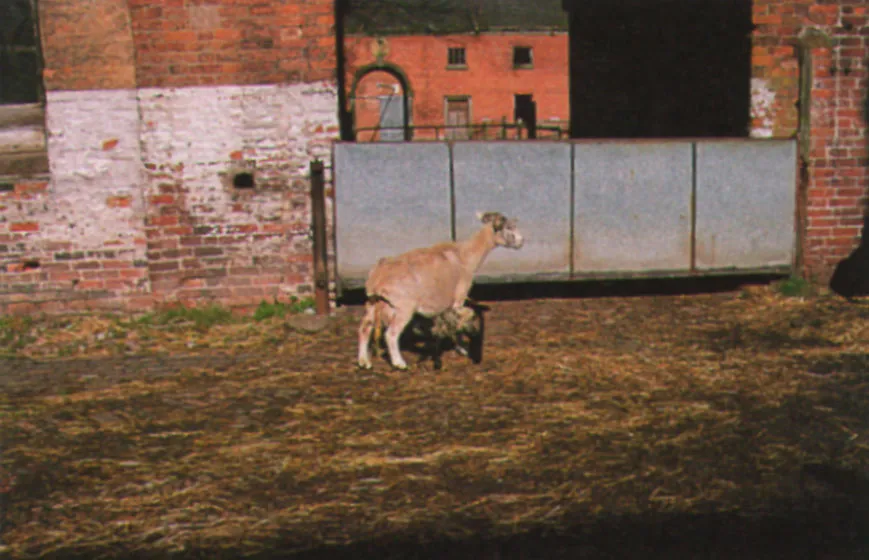
1
Provided the udder is sound and there has been no prolapse problems at the previous lambing, it is wise to keep the ewes as long as possible and that can mean many years. The ewe shown in photo 1 was 27 years old. She had had a crop of lambs every year for 24 years and her breeding career only came to an end when she required a Caesarean section.
The advantages of keeping these old ewes are obvious. Apart from the low capital outlay, the ewes acquire a powerful resistance against all the diseases encountered on that farm. For the same reason one should always breed one’s own replacements.
Bought-in sheep have little or no resistance to the resident local bugs and will take several years to settle down. This fact has been illustrated again and again during restocking.
37 Natural Lambing
It is easier to kill a ewe by lambing her prematurely or roughly than by shooting her with a humane killer. If you want to keep lambing losses to a minimum, the first basic fact to remember is that it always pays to give nature a chance.
Most ewes will lamb by themselves with no trouble whatsoever, as shown in the sequence of photographs that follows.

Appearance of the water bag. The lamb may or may not show.

Early signs. If the feet and head are presented, do not interfere.
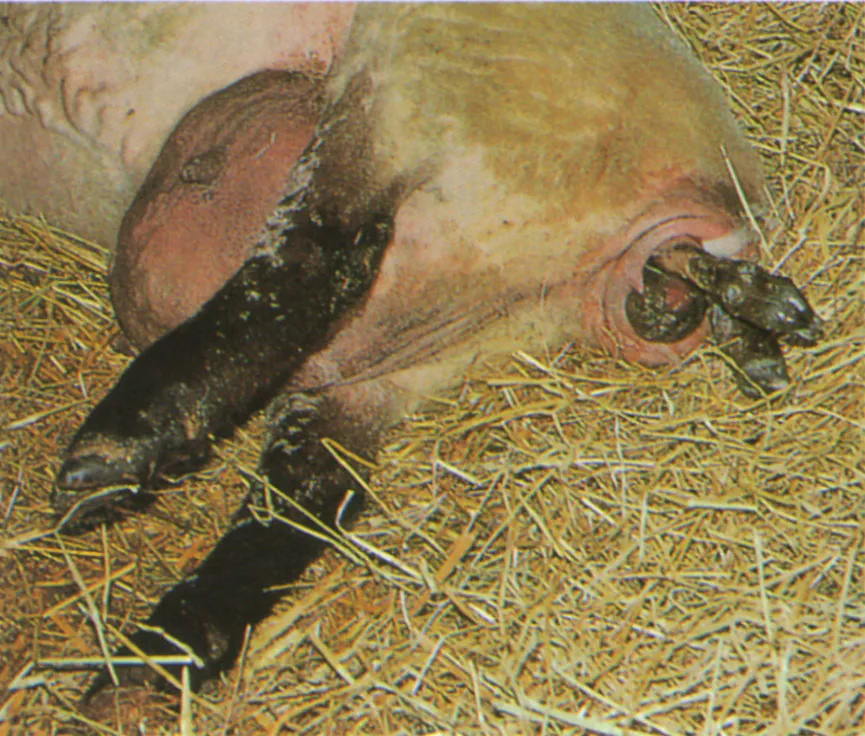
Rapid natural progress.

Head out and shoulders through the ewe’s pelvis.

Three-quarters of the way.

Nearly out.

The final push. A healthy live lamb.

If the ewe remains prostrate, she’s most likely having a second lamb. It is still wise to leave well alone.

The second lamb well on the way.
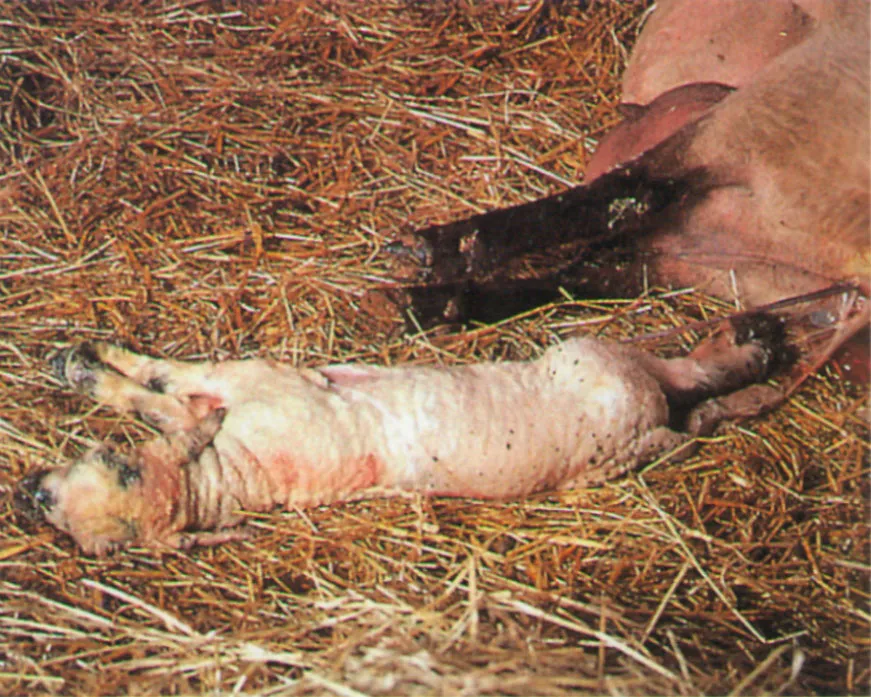
Birth of the second lamb.

The happy and healthy ending.
It is wrong to pull a lamb away quickly even when it is straight, because the sudden change in temperature and atmospheric pressure will often kill it. Every experienced shepherd has seen this happen: an apparently normal lamb is pulled away quickly – it takes one gasp and dies. Such death is due to shock.
This is a simple but nonetheless tremendously important point well worth bearing in mind. When the lamb is straight, never interfere unless the ewe ceases to make progress.
38 A Guide to Good Lambing
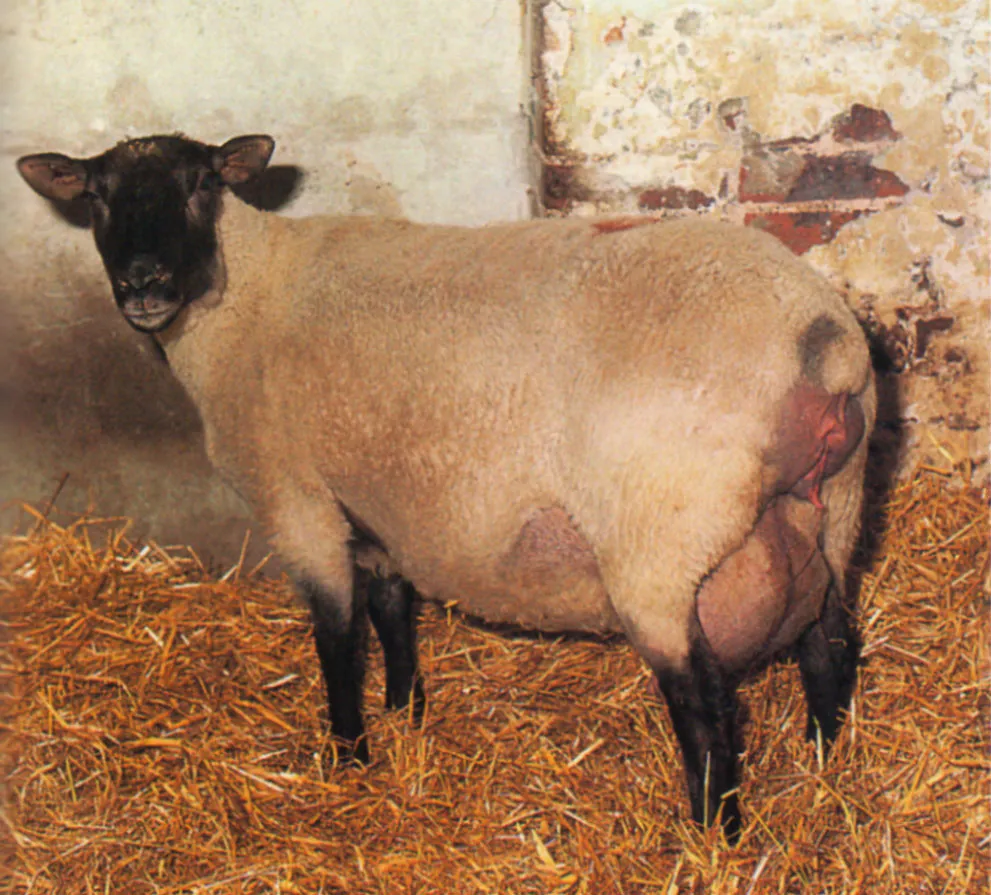
1
The percentage of malpresentations in the 2 ewe is comparatively small. In any case it is quite safe to leave a ewe in labour for at least 4 hours before examination (photo 1).
Apart from patience there are four golden rules at lambing time:
1. Cleanliness.
2. Getting the ewe into the correct position.
3. Lubrication.

2
4. Careful manipulation (photo 2).
Cleanliness

3
I know cleanliness in the field is not always easy, but I believe that, wherever possible, no examination should be attempted in the field. The suspect ewe should be loaded up and taken to the farm building (photo 3).
Transport is so easy on most farms that it’s ridiculous to attempt interference outside. At the building, the patient should be taken out, and prepared for examination on a clean bed of straw. And, of course, it is preferable and much more comfortable if the examination can be done under a roof.

4
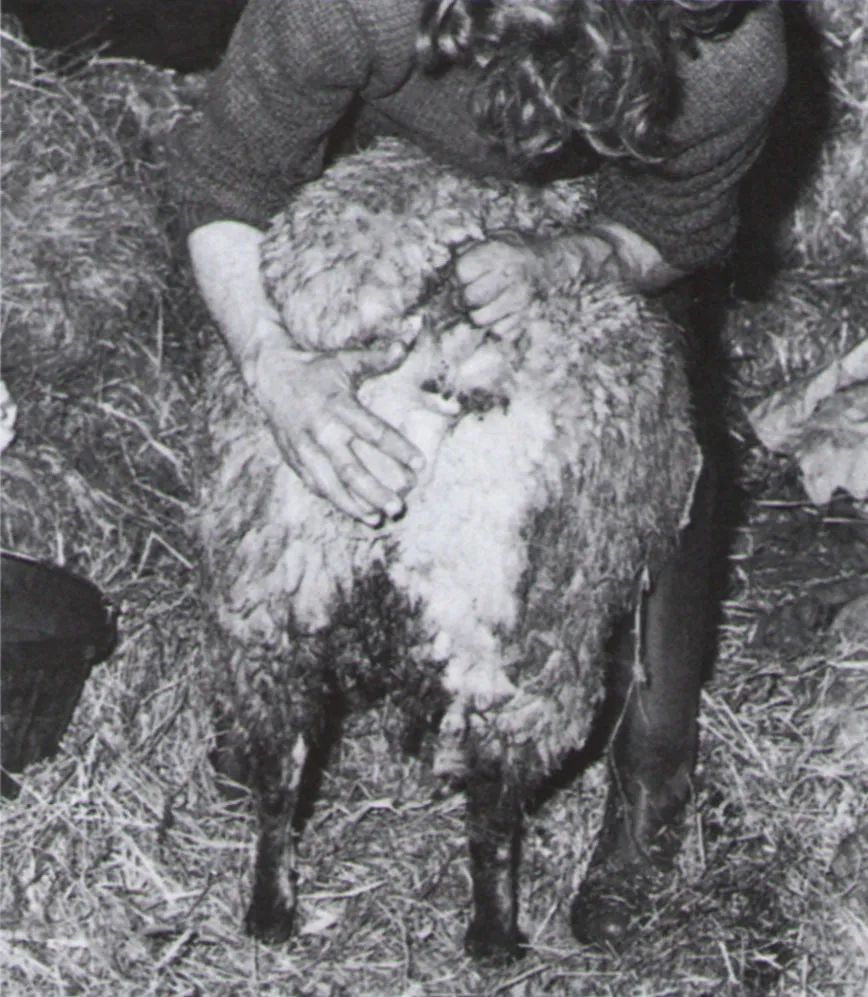
5
All the wool and dirt should be clipped from around the vulva (photo 4). This is a very useful hint, bec...